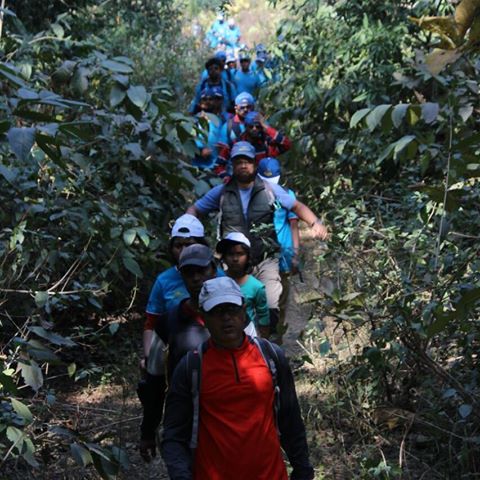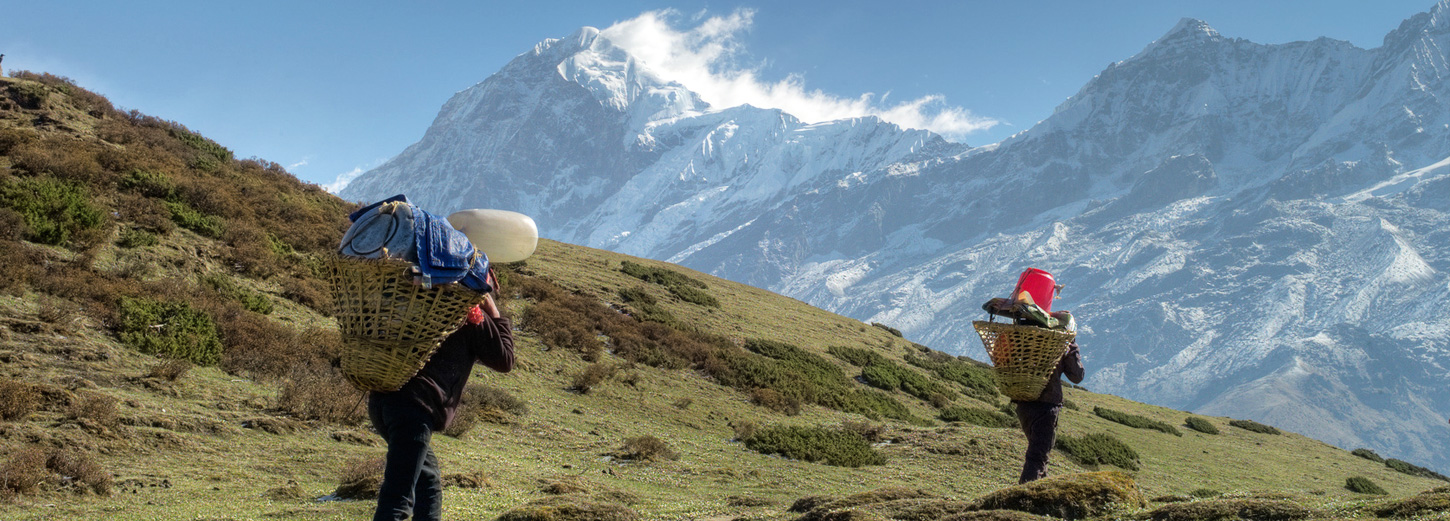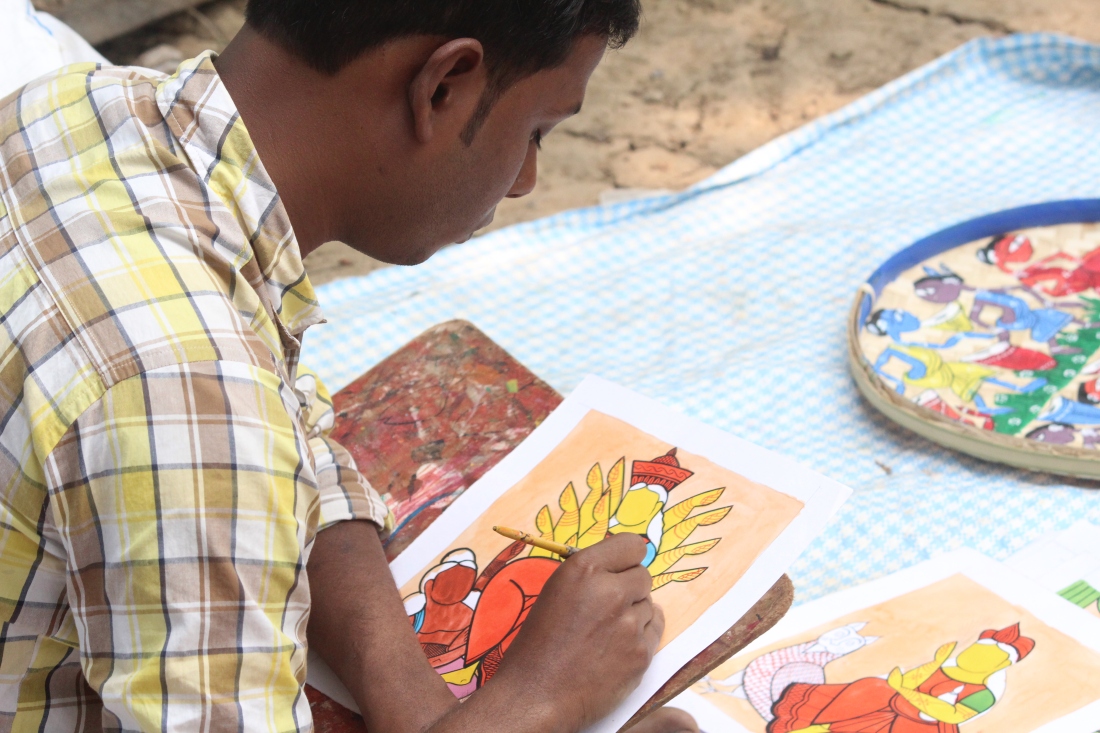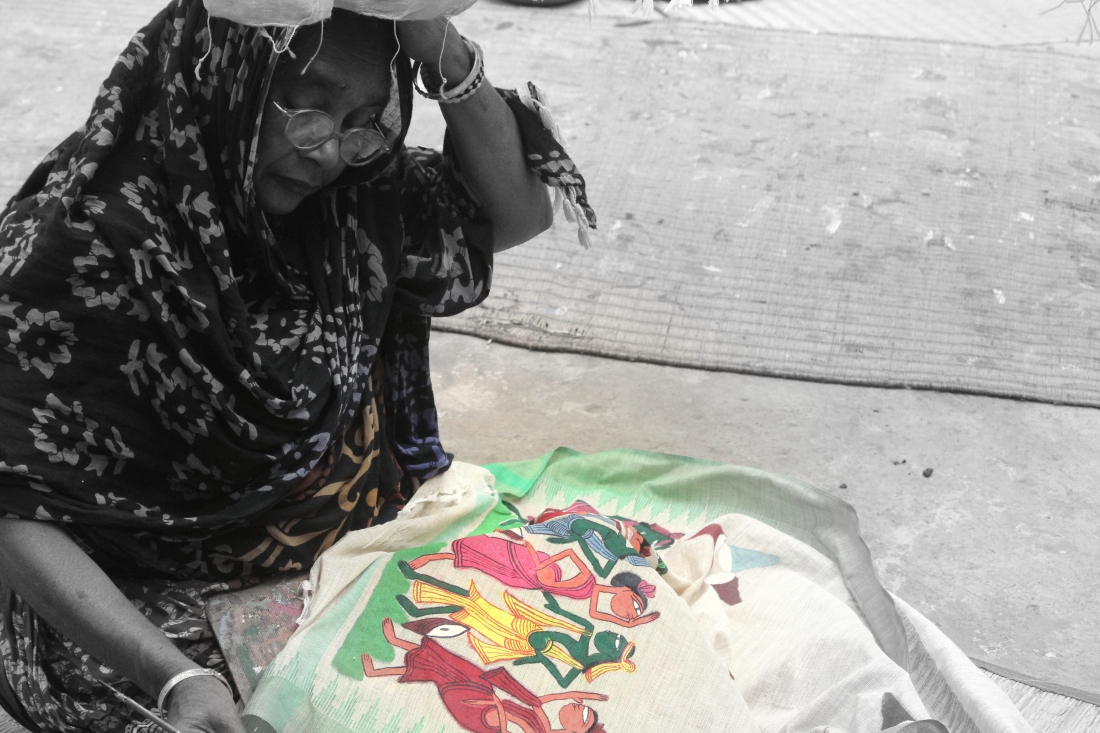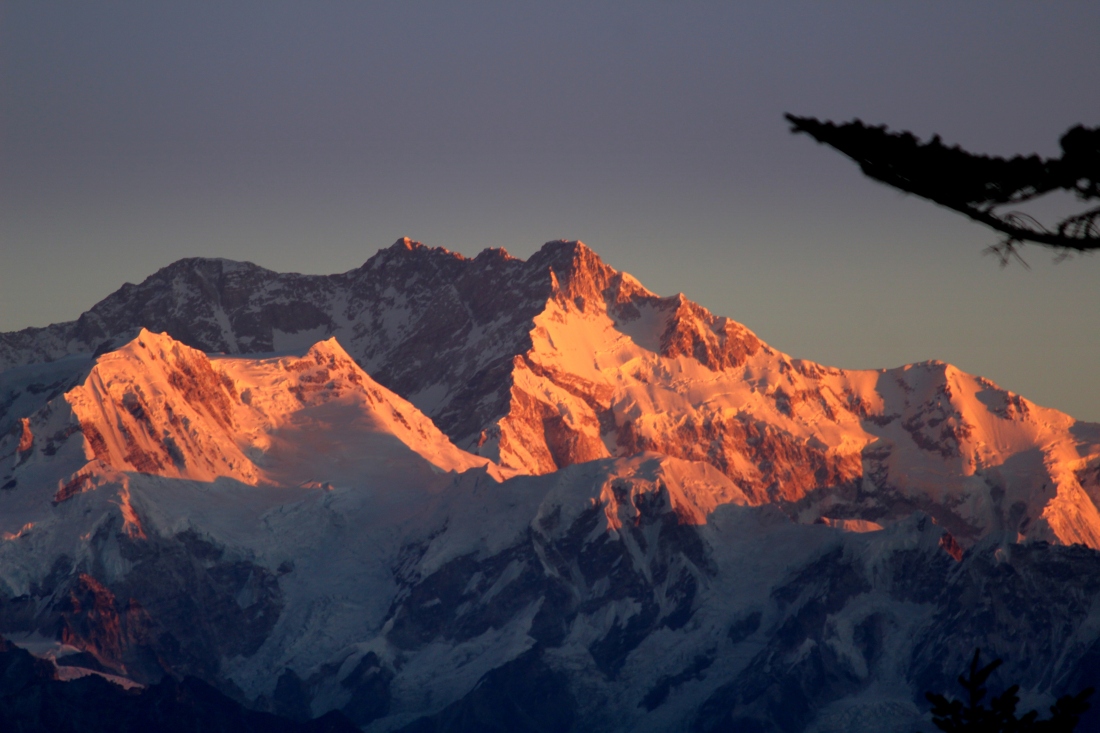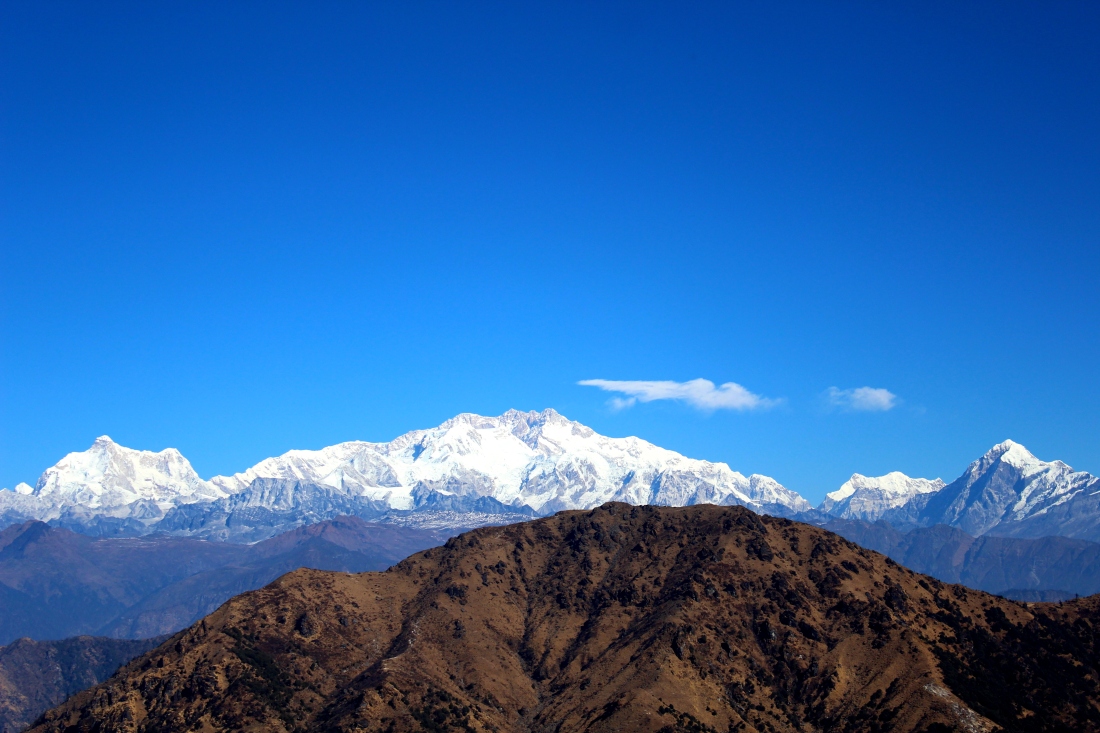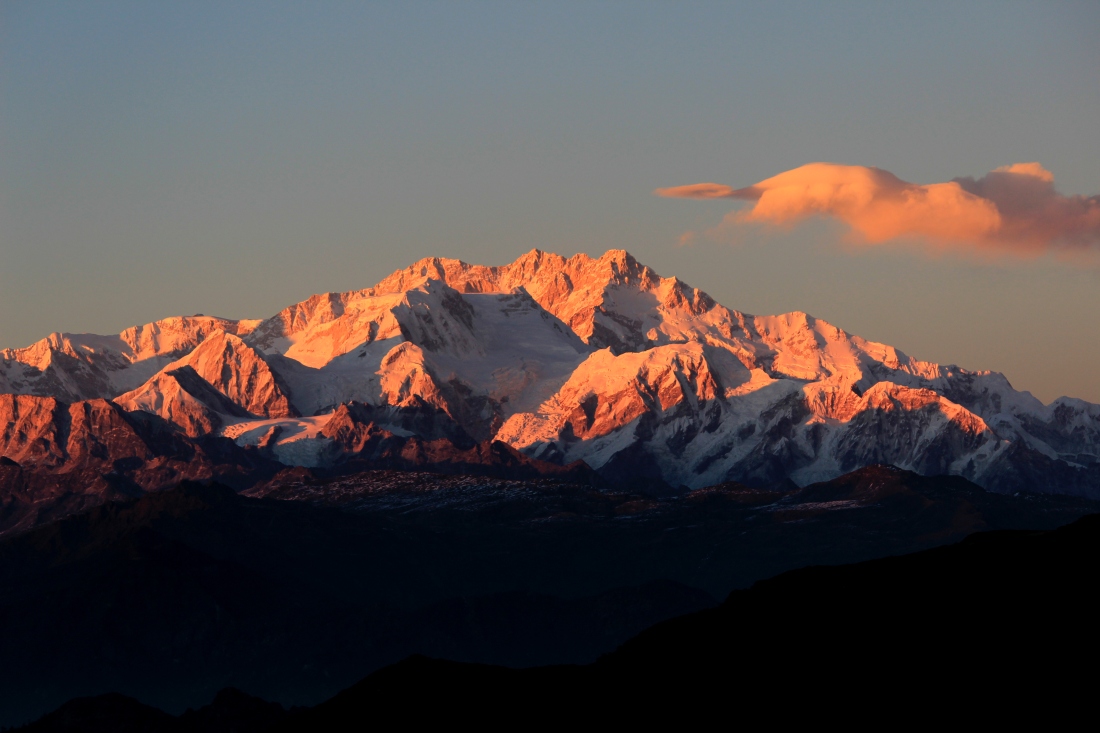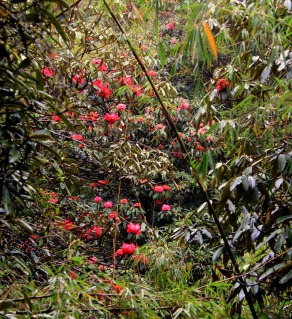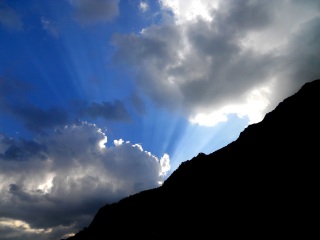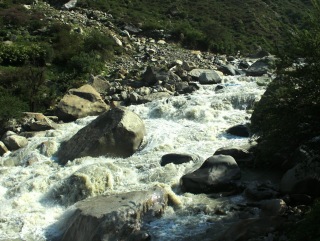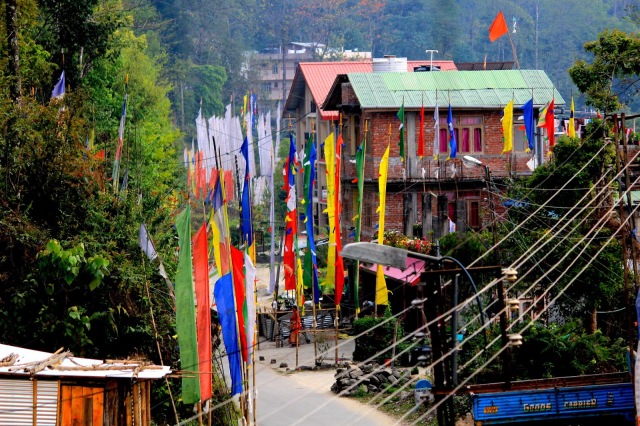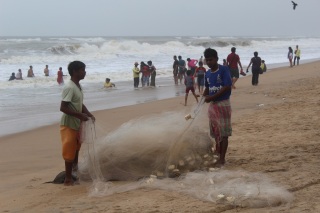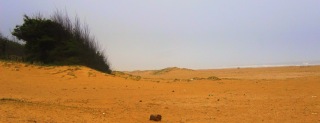গত বছর এমনই এক বর্ষাঘন অগাষ্টে চারজন বন্ধু মিলে চলে গেছিলাম পুরীতে। ইচ্ছে হয়েছিল বর্ষায় পুরীর সমুদ্রের রূপ দেখব, বৃষ্টিস্নাত পারাবার, স্যাঁতস্যাঁতে আবহাওয়া ও পাগলা হাওয়ায় ভাসিয়ে দিতে ইচ্ছে হয়েছিল শহুরে দিনযাপনের ক্লান্তিকে।

কিন্তু পুরী পৌঁছনোর পর, সমুদ্রসৈকতে থিকথিকে ভীড় দেখে মনে হচ্ছিল পালিয়ে যাই। যদিও আমরা ভালভাবেই জানতাম যে ঐ সপ্তাহান্তের ছুটিতে আমাদের মত আরও উৎসাহী মানুষজন পুরীতে ভীড় করবেনই, কিন্তু সেটা যে এইরকম অশান্ত রূপ ধারন করবে, সেটা আগে থেকে বুঝতে পারিনি আমরা কেউই। সুবিশাল ঢেউগুলো যখন পাড়ে আছড়ে পড়ছিল, অত্যুৎসাহীরা সেলফি ষ্টিকে ফোন গুঁজে ছবি তোলায় মনোনিবেশ করছিলেন। যেন, সেলফি না তুললে সমুদ্রবিহার যথার্থভাবে সম্পন্ন হবে না। পাঠকের উদ্দেশ্যে বলি, সেলফি তোলায় আমার কোন আপত্তি নেই, কিন্তু, প্রকৃতির প্রকৃত সান্নিধ্য লাভ করতে হলে, আমাদের দুটো চোখ ও মন খোলা থাকলেই যথেষ্ট বলে আমি মনে করি। চোখ, প্রাকৃতিক রূপ আহরণ করার জন্য, মন, অনুভব করার জন্য, সেখানে, মোবাইলে নিজের আমিত্ব প্রমাণ করাটা আমি বাহুল্য বলেই মনে করি। যাইহোক, লেখায় ফিরি। সেলফি চিত্রগ্রাহকদের পিছনে ফেলে, আমরা বালুতট ধরে বেশ খানিকটা এগিয়ে গেলাম। যাওয়ার পথে কিছু নাছোরবান্দা ঢেউ এসে আমাদের পা ভিজিয়ে আবার ফিরে যাচ্ছিল, সাথে ছিল এলোমেলো হাওয়া। এগিয়ে গিয়ে একটা জনবিরল অঞ্চলে এসে চটি পেতে বসলাম। আনমনে ঢেউ গুনছিলাম, এমন সময় দেখলাম একটা উটকে বেশ সাজিয়ে গুজিয়ে নিয়ে যাওয়া হচ্ছে। সাগরপাড়ে উট? এ যেন সোনার পাথরবাটি। তবে যে বইতে পড়েছিলাম, উটেরা মরুভূমিতে থাকে? ভাবতে ভাবতে খানিক দূর চোখ গেল, দেখলাম, সেই উটের মালিক, সওয়ারি নিচ্ছে, যত্ন করে বসিয়ে দিচ্ছে উটের পিঠে। তবে কি মরুভূমি থেকে পেটের দায়ে চলে আসতে বাধ্য হয়েছে উট ও তার মালিক? না কি এও আরেকটা চমক, ভ্রমণপিপাসুদের টানার?
চিন্তাস্রোতে বাধ সাধল প্রচণ্ড খিদে ও তেষ্টা। ডাবের জলে তৃষ্ণা সাময়িকভাবে মিটলেও, খিদে যেন আরও বেড়ে গেল, ‘Bengali Food Available’ রেষ্টুরেন্টদের পাশ কাটিয়ে, একটা টোটো ধরে চলে এলাম ‘Wild Grass’ এ। এই রেষ্টুরেন্টটি পুরী শহরে অবস্থিত ও এর বিশেষত্ব হচ্ছে যে এখানে ওড়িশার স্থানীয় খাবার পাওয়া যায়। ঘুরতে এসে যদি স্থানীয় খাবারই না খেলাম তাহলে আর কি করলাম। বাঙ্গালী খাবার তো বাড়িতেই খাই বছরের বাকি দিনগুলোয়। খাবার অর্ডার করে অপেক্ষা করার সময়তে মেনু বুক মুখস্থ করা আমার চিরকালের অভ্যেস। ভোজনরসিক তো, তাই! পাতা উল্টোতে উল্টোতে চোখ পড়ল একটি বিজ্ঞাপনে। পুরীর সাইকেল ক্লাব ও হেরিটেজ ওড়িশার তরফ থেকে সাইকেল ট্যুরের বিজ্ঞাপন ও যোগাযোগ করার দুরভাষ নম্বর। বাকিদেরকে দেখাতেই তারাও সঙ্গে সঙ্গে রাজি হল। কাঁকরা ঝালের তুল্যমুল্য বিচার করতে করতে ফোন করে ফেলা হল সেই নম্বরে। ব্যাস, পরদিনই আমাদের সাইকেল ট্যুরের ব্যবস্থা হয়ে গেল।
ব্যবস্থা তো হল। কিন্তু আমার মনে দুরুদুরু শুরু হয়ে গেল। সেই কবে, পনেরো বছর আগে শেষ সাইকেল চালিয়াছিলাম। পারব তো চালাতে? ‘Nature Trail’ এ চালাব স্থির করেছি আমরা, কিন্তু, কতক্ষণ বা কতটা পথ চালাতে পারব, কিছুই তো জানিনা। পূর্বাভাসে আবার ভারী থেকে মাঝারি বৃষ্টির কথা বলা আছে, কি যে হবে?… উৎকন্ঠার মাঝে একটা চাপা উত্তেজনাও কাজ করছিল। মন চাইছিল আবহাওয়া ভাল থাকুক।
পরের দিন, যথাসময়ে, কথামত, চার বন্ধু পৌঁছে গেলাম, ‘Wild Grass’ এ। গাইড ভদ্রলোকের জন্য অপেক্ষা করতে বলে রেষ্টুরেণ্টের ম্যানেজার আমাদের জন্য সাইকেলের ব্যবস্থা করার নির্দেশ দিলেন কোন কর্মচারীকে। সাইকেল চলে আসার পর আমার বাকি তিনজন বন্ধু সেগুলিতে চড়ে প্র্যাক্টিস করতে শুরু করে দিল। আমি স্থাণুর মত কিছুক্ষণ দাঁড়িয়ে থেকে আমার জন্য বরাদ্দ সাইকেলে উঠে চালানোর চেষ্টা করলাম। প্রথম দুবার উঠতেই পারলাম না। তৃতীয়বারে ব্যালেন্স পেয়ে গেলাম ও খানিকদূর চালিয়ে বেশ মনের জোর পেলাম। সাইকেল চালিয়ে স্টার্টিং পয়েণ্ট ফেরার সময় দেখলাম গাইড ভদ্রলোক অপেক্ষা করছেন। সবার সাথে করমর্দন করে উনি নিজের পরিচয় দিলেন ও যেই রাস্তায় আমরা যাব সেটার একটি সংক্ষিপ্ত পরিচয় দিলেন। শুরুর পথের অংশটুকু হাইওয়ের ওপর দিয়ে ছিল। ইচ্ছে মত স্পিড ও গিয়ার পরিবর্তন করতে করতে শিক্ত সবুজ বনানী পাশ কাটিয়ে মসৃণ পিচকালো রাস্তার ওপর দিয়ে সাঁ সাঁ করে এগিয়ে যাচ্ছিলাম আমরা। তিন বন্ধুর একজন, আমার স্বামী, কিছুটা পিছিয়ে ছিল, আমার কাছাকাছি দুরত্বে এসে বলল যে ওর নিজের কলেজের সময়ের কথা মনে পড়ে যাচ্ছে। কিন্তু, আমার নিজের স্কুলবেলার কথা মনে পড়ে যাচ্ছিল। ছোট্ট শহর দূর্গাপুরের আরও ছোট্ট একটা টাউনশিপ, এম এ এম সি তে কোয়ার্টারের সামনের মাঠের কথা, যেখানে বিকেলগুলো সাইকেল চালিয়েই কাটত। স্মৃতির ভেলায় চেপে সেইসময়ের কথা রোমন্থন করতে করতে একটা জঙ্গলের কাছে এসে আমরা থামতে বাধ্য হলাম। সাইকেলের চাকা বালিতে গেঁথে গেল, আমরা নেমে পড়লাম সাইকেল থেকে। গাইড ভদ্রলোক নিজের সাইকেল থেকে নেমে এসে বললেন যে আমরা বালুখণ্ড সংরক্ষিত বনাঞ্চল বা বালুখণ্ড স্যাংচুয়ারির কাছে এসে পৌঁছেছি। যেখানে আমরা থামতে বাধ্য হয়েছিলাম, সেই যায়গা থেকে ভেতরের দিকে যাবার কিছুটা পথ বালিপথ, সাইকেল চালানো কষ্টসাধ্য, এইটুকু পথ হেঁটে পেরোলেই আবার সাইকেলে উঠতে পারব।
বালিতে পা ডুবিয়ে সাইকেল হাতে টানতে টানতে পেরোলাম সেই পথ। পথের শেষে আরেকটা লাল মোরাম বিছোনো পথ অপেক্ষা করছিল আমাদের জন্য। মোরাম পথের একধারে অগোছালো কাজুবাদামের গাছ, আরেক ধারে সারিবদ্ধ ঝাউগাছ। আমরা গাইডের কাছে জানতে পারলাম যে বালুখণ্ডের সংরক্ষিত বনাঞ্চলে ওড়িশা সরকার সামাজিক বনসৃজনের পরিকল্পনা করেছে। এই পরিকল্পনায় এই অঞ্চলের আদিবাসীদের বনরক্ষা করার দায়িত্ব দেওয়া হয়েছে। বনাঞ্চলটির অদূরে একটি ছোট্ট সৈকত আছে, সেই অঞ্চলটি দেখাশোনা করার দায়িত্বও দেওয়া হয়েছে আদিবাসীদের।



এই মোরামপথটিকে যদি আমি ‘সবুজ মাইল’ বলে আখ্যা দিই, তাহলে অত্যুক্তি করা হবে না। পথের দুধারে যেন সবুজ চাদর বিছোনো ছিল। সেই চাদর ছিল সবুজ ঘাস, আগাছা, ঝোপঝার, ও গাছপালা দিয়ে সযত্নে বোনা। অগাষ্ট মাসে সেই সবুজ রঙ আরও বেশি উজ্জ্বলতা লাভ করেছিল বৃষ্টির দাক্ষিণ্যে। কিছু কিছু অংশে, পথটা বেশ চড়াই ছিল। সেই চড়াইতে আমার সাইকেল চালাতে ভালই কষ্ট হচ্ছিল। পায়ে ব্যথা করছিল। মুহুর্মুহু ব্যালেন্স হারাচ্ছিলাম আমি। সাতপাঁচ ভাবতে ভাবতেই অনুভব করলাম আমি সাইকেল থেকে পড়ে গেছি। হাতে পায়ে লাল ধুলো, পাশে পড়ে আছে সাইকেলটা। কি করে পড়লাম, বুঝতেই পারিনি। এক লাফে উঠে পড়লাম, হাত পা ঝেড়ে, সাইকেলকে উঠিয়ে তাতে চড়ে বসে প্যাডেলে পা দিলাম। মন কে বললাম, পারতেই হবে। জোর সঙ্কল্পে প্যাডেলে ধাক্কা দিতে দিতে পৌঁছলাম সেই অনাঘ্রাত বালুখণ্ড বালুকাবেলায়।
সাইকেল থেকে নেমে এগিয়ে গেলাম সামনে। সূর্য তখন সবে অস্তাচলে যাবার সিদ্ধান্ত নিয়েছে। আকাশ মেঘে মলিন তার সাথে গোধুলির ম্যাটম্যাটে সোনালি আলো। সেই আলোয় অনুচ্চ বালিয়ারিগুলো দেখে মনে হচ্ছিল পুরোনো হয়ে যাওয়া মলিন সোনার অলঙ্কারে বালুতটটিকে সাজানো হয়েছিল বোধহয় বহু বহু বছর আগে।



জনহীন এই সৈকতটিকে দেখে মনটা কেন জানিনা বেশ ভারাক্রান্ত হয়ে গেছিল। অথচ, কালই তো পুরীর সৈকত থেকে পালাই পালাই করছিলাম। বেশ খানিকক্ষণ ম্লান আলোয় সমুদ্রের তরঙ্গরাজি দেখলাম। আচ্ছা, আমাদের জীবনতরঙ্গও কি এমন নয়? যতই দুঃখ আসুক, যতই মলিন করে দিক আমাদের হৃদয়, আমাদের তো ঢেউগুলোর মতনই চলতে হয়, থামলে চলে না, তাই না?
ম্লান আলো, আরও মলিন হতে হতে মিলিয়ে গেল। অন্ধকারটা হুশ করে নামল যখন, তখন আমরা ফেরার পথ ধরেছি। পিছনে ফিরলাম একবার, একরাশ ঢেউ তীরে ভেঙ্গে আমাদের হাত নাড়িয়ে বিদায় জানিয়ে গেল। সাইকেলে যখন আবার হাইওয়েতে উঠেছি, গাইড বললেন খানিকটা দূরে একটা ছোট চায়ের দোকানের সামনে থামতে। দোকানের সামনে থেমে আমরা জল খেলাম, একটু জিরিয়ে নিলাম। গাইড আমাদের অতি সমাদরে দোকানের ভেতরে দিয়ে পেছনদিকের একটি বসার যায়গায় নিয়ে গিয়ে বসালেন। গরম গরম ডাল পকৌড়ি আর চা এল আমাদের জন্য। খানিক পরে দেখলাম সদ্য কাটা ছানা আসছে। দোকানী পরম সঙ্কোচে বললেন যে ছানাপোড়া শেষ হয়ে গেছে তাই ছানা নিয়ে এসেছেন আমাদের জন্য। ভিনরাজ্যের সাধারণ মানুষের সাথে কথা বললেই বোধহয় প্রকৃত ভারতাত্মার স্বরূপ বোঝা যায়। কে আমরা? উনি তো আমাদের প্রথমবার দেখলেন। আমাদের খাওয়াতে পারেননি বলে ওঁর তো সঙ্কোচ করার কোন দরকার ছিল না। মনে পড়ল, কোথাও পড়েছিলাম, অচেনা, অনাত্মীয়কে আপন করে নিতে যে ভারতীয়দের জুড়ি নেই, তা তুমি যতই তাদের মধ্যে বিভেদ করার চেষ্টা কর না কেন। আমাদের যে পকৌড়ি আর ছানা খেয়ে খুব ভাল লেগেছে, সেটা শুনে গাইড ও দোকানীর মুখে হাসির রেখা দেখা দিল। ওঁরা বারবার বললেন, পরেরবার ছানাপোড়া খাইয়ে তবে ছাড়বেন।
আবার সাইকেলে চড়লাম। এবার শুরু যেখান থেকে করেছিলাম, সেই ‘Wild Grass’ এ ফেরার কথা। পা আস্তে আস্তে জবাব দিচ্ছিল, হাত আর স্টেডি থাকছিল না, মনে হচ্ছিল পড়ে যাব আবার। সামনের দিকে তাকালাম। ‘Wild Grass’ এর বিল্ডিংটা যেন হাতছানি দিয়ে ডাকছিল, জোড়ে প্যাডেল চালাতে চালাতে অবশেষে পৌঁছলাম লক্ষ্যে, সাইকেল অভিযান সাঙ্গ হল।
সাইকেল রেখে একটু জিরোতে বসলাম। কথায় কথায় গাইড জানালেন যে আমরা ৩০ কিলমিটার সাইকেল চালিয়েছি আজ। সবাই ৩০ কিমি শুনে ভয় পেয়ে যাব ভেবে উনি আগের থেকে কিছু বলেন নি। পরেরবার আবার ওঁর সাথে সাইকেল অভিযানে বেরোব, কথা দিলাম আমরা সবাই। উনি করমর্দন করে চলে গেলেন।
সপ্তাহান্তের ভ্রমণে সাগরসঙ্গমের উদ্দেশ্যে বেড়িয়ে যে একটা অন্যরকম অভিজ্ঞতার সাক্ষী হলাম আমরা, সেটা আমাদের ভাবনাতীত ছিল। পুরীর সাগর তো সবাই দেখে, পুরীর যেই রূপ আমরা দেখলাম, সেটা আর দেখতে পারে ক’জন? পরেরবার পুরী এলে আবার অন্য কোন পথে সাইকেল নিয়ে বেড়িয়ে পড়ার সঙ্কল্প করে, ভারাক্রান্ত মনে কলকাতা ফিরে এলাম।
পুনশ্চঃ
১) আমাদের গাইডের নামঃ শ্রী যুগব্রত কর। উনি পুরী সাইকেল ক্লাবের সদস্য। উনি প্রধানতঃ তিনটি ট্রেলে সাইকেল ভ্রমণ করান, সেগুলো হল, – নেচার ট্রেল, ভিলেজ ট্রেল আর পুরী হেরিটেজ ট্রেল। আমরা নেচার ট্রেলে অংশ নিয়েছিলাম।
২) যুগব্রত করকে যোগাযোগ করার মাধ্যমঃ
দুরভাষঃ +৯১ ৯৪৩৭০২৩৬৫৬
ইমেলঃ bubu@heritagetoursorissa.com
অথবা,
Wild Grass এ যোগাযোগ করলে ওঁরা যোগাযোগ করিয়ে দেবেন।
৩) ব্যবহৃত সব ফটো তুলেছেন অভীক দাস, সুদীপ বসাক।
৪) অনুমতি না নিয়ে ছবি বা ব্লগের ভ্রমণ বিবরণ ব্যবহার করবেন না।


